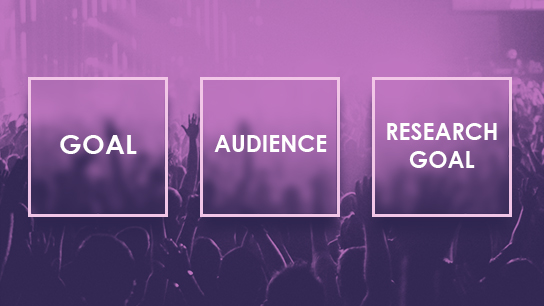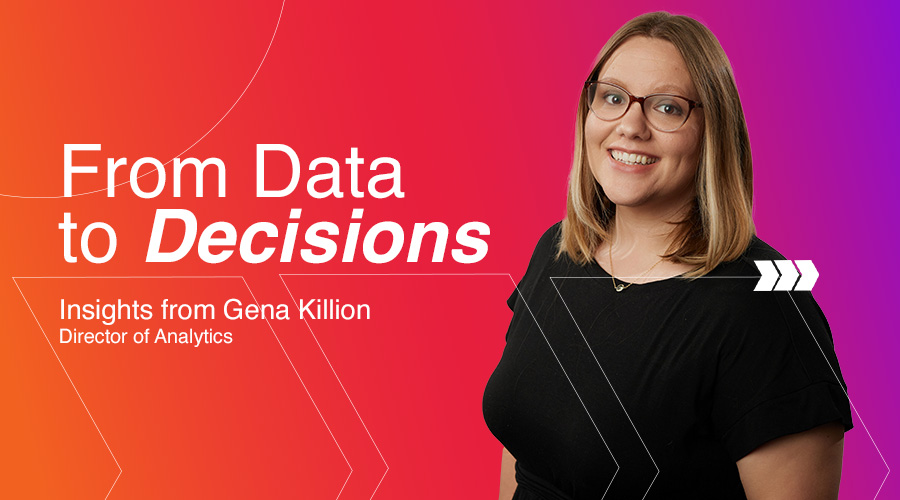In the day of agile marketing, it’s more important than ever to do your homework. At the heart of any good marketing decision is a deep understanding of your subject matter – whether that’s consumer trends, market shifts or current challenges.
Taking the time at the forefront of a project to gather insight will help drive communication, remove some of the risk and ultimately inform decisions for better results. Over the past decade, the ways we gather research and data has immensely changed, but the principles have stayed the same.
Recently, our VP of Strategic Services, Misty Klobucher and I shared some best practices for selecting the right research with the Illinois Council of Convention & Visitor Bureaus. And while we brought this info to a group of marketing decision makers in the tourism industry, marketers in any field looking to make better decisions can benefit from these best practices. So, we’re breaking down the five fundamentals of conducting better research.
Step 1: Identify Your Business Goal
Before your research questions can be crafted and your data can be collected, first you need to identify your business goals. At a high level, what objective are you trying to achieve with your marketing. You may have multiple goals, so prioritize them and determine the most significant one that needs to be informed by research.
Step 2: Find Your Target Audience
Identifying your primary business goal will help you will narrow down your target audience so you can begin finding your sample. This step will ensure you are collecting the most relevant information necessary to making decisions. Ask yourself:
- Who are they?
- Where do we find them?
- What will they respond to?
- How do I know it’s the right audience?
Remember, a survey doesn’t need thousands of respondents to be successful. For many designs, it’s more important to find the right representation of respondents, even if it’s a small group. The survey will yield better results if you define and research the right audience.
Step 3: Identify Your Research Objective
Once you have your business objective and your target audience, think about what you are trying to achieve with research. This step is crucial before deciding on the type of research you will be conducting. Here are a few goals for conducting research to use as a guide.
- Explore new ideas or find new inspiration to make a major decision like how to diversify and expand your offerings.
- Clarify or understand the perception of your company in the marketplace vs. consumers’ wants and needs.
- Validate a current marketing approach to help with optimization decisions or better communicate your current approach to all stakeholders.
Step 4: Craft the Right Kind of Research
When determining research design, start with determining if you need to conduct a qualitative or a quantitative study. Think through the outcome of each method and align that with the research objective you identified in step three.
Qualitative research provides context, is explanatory and allows for more probing. Quantitative research is projectable, measurable over time and is easily visualized with numbers. Another consideration is the team working on your research – where their skills lie and how much time they can dedicate to this.
And crafting the right research doesn’t always necessarily mean it has to be done with a traditional study. There are more ways than ever to engage with your customers online. Consider these options:
- Online polls
- Audience specific panels
- Online Focus groups – real time or asynchronous
- Newsletter survey
- Interactive advertisements
- Screen sharing/visually aided discussion
Step 5: Ask the Right Kind of Questions
The last step to crafting your research study is to design the questions. Consider when to use open ended questions vs. closed ended questions.
Open ended questions are free form, fill in the black, prompted and can be explanatory. Remember though, answers to open ended questions can be subjective to different parties. So, if your research objective is to get all your stakeholders on the same page, relying on many open ended questions may not be the method for you.
Close ended questions can be designed using a rating scale, a forced choice, multiple selection, ranking order or using demographic/firmographic questions. Each type provides a slight variation of insights based on what you want to know. Closed ended questions are more projectable, but are reliant on the survey author having a handle on the possibilities to be tested.
Time to Analyze
You’ve determined your methodology, conducted your research and data is flowing in. Now comes the most crucial part – analyzing the data.
If you have allocated the time and money to conduct research, make sure to listen to what it is telling you. Develop insights that will be most helpful to you and communicate, communicate, communicate the results. Even to those who may not have direct line of site to the research. The results may have an indirect impact on other initiatives.
These five fundamental steps seem simple, but in a fast-paced marketing office, they are easily overlooked. If you are doing research for the sake of doing research, you are already committing to wasting your time and money. Make sure to listen to your data, really listen. The insights gained can far outweigh the money lost from an uniformed decision.





